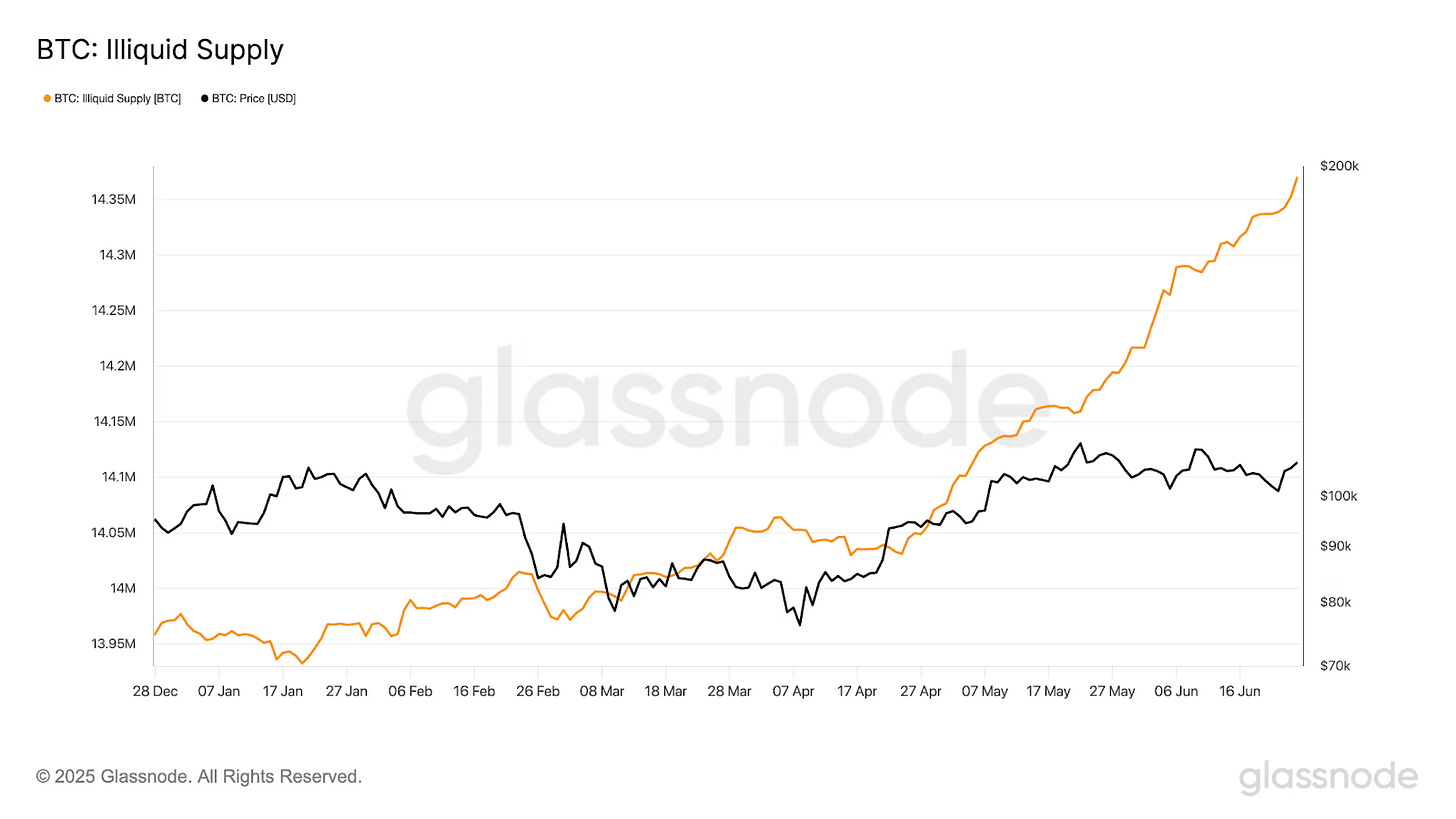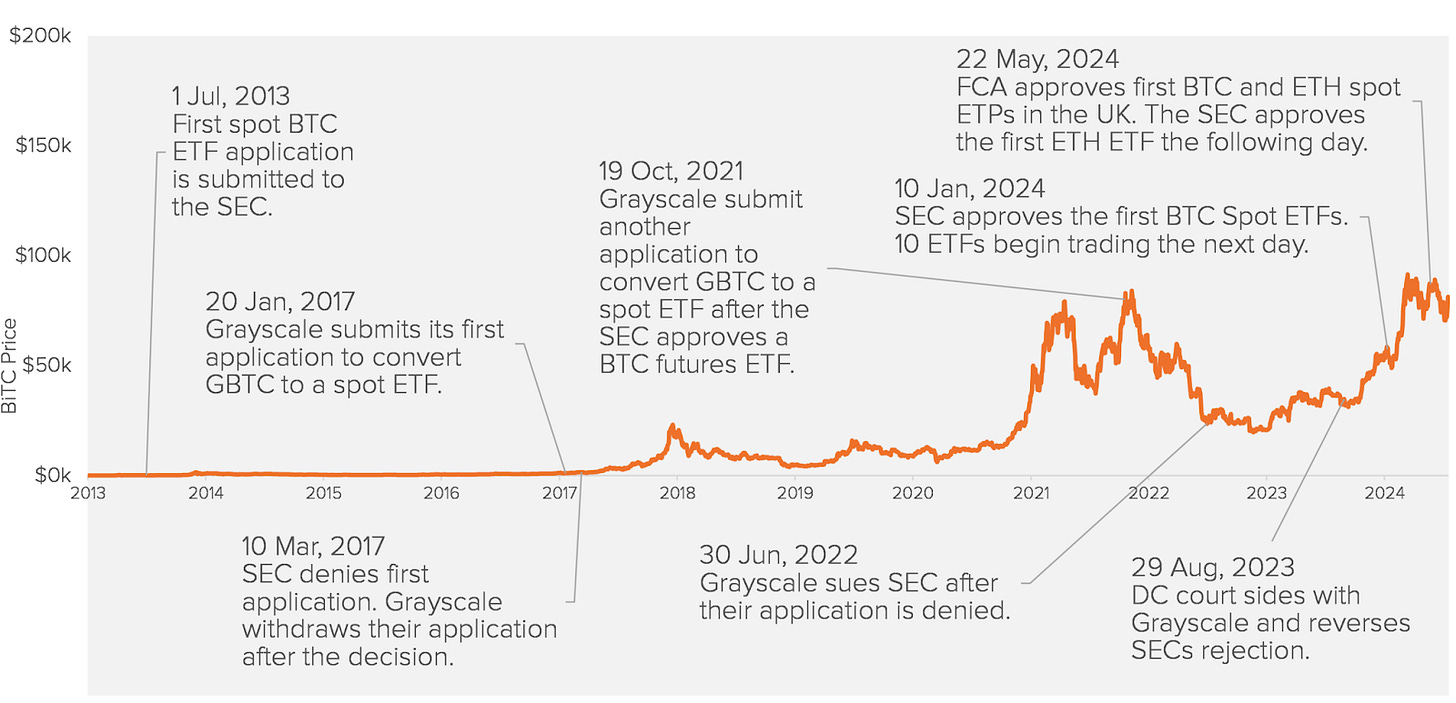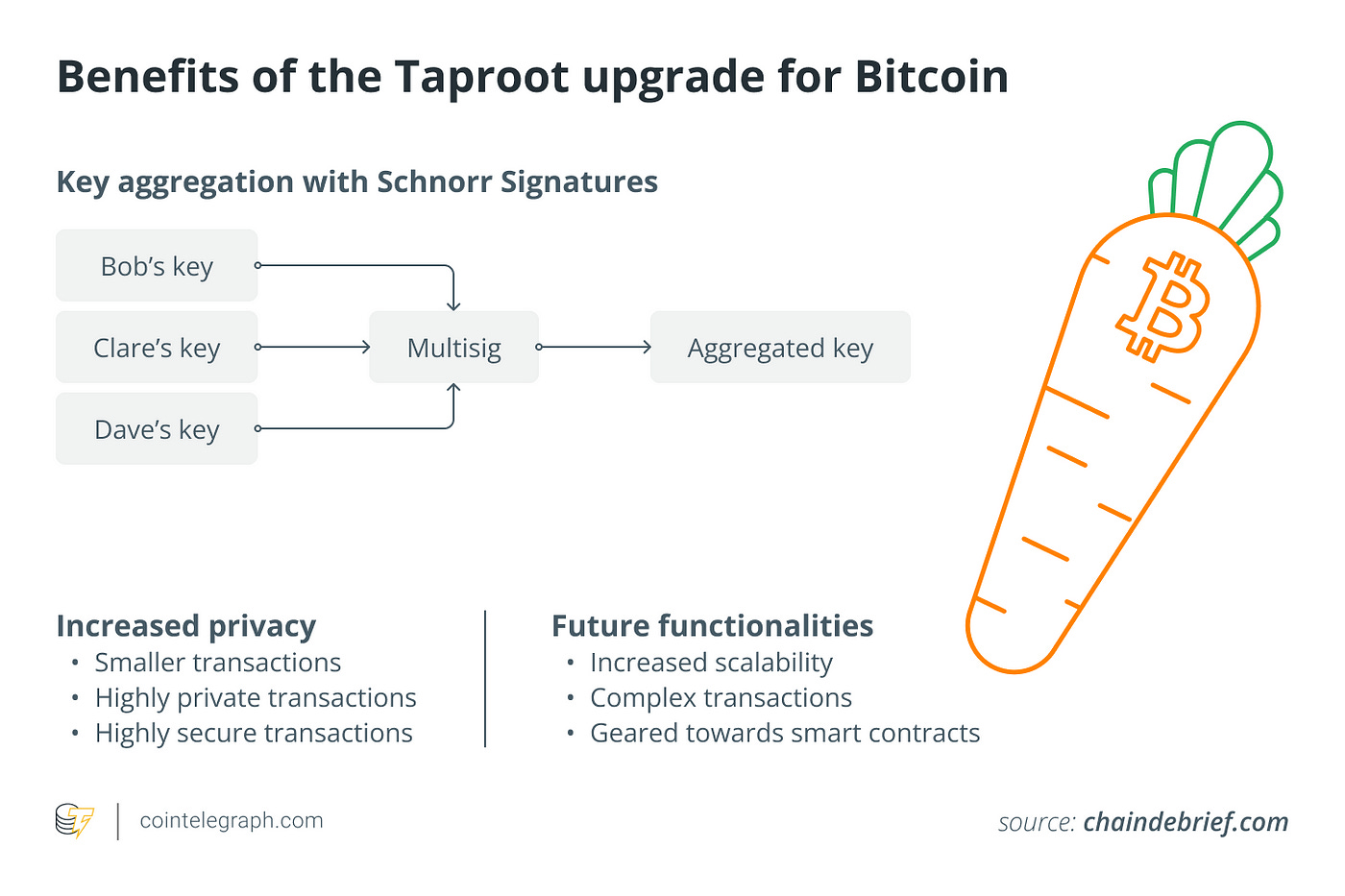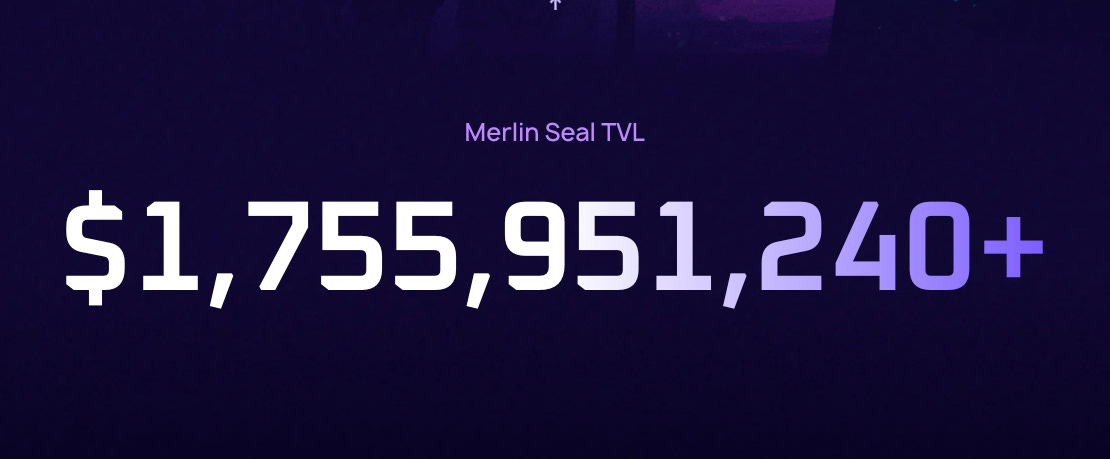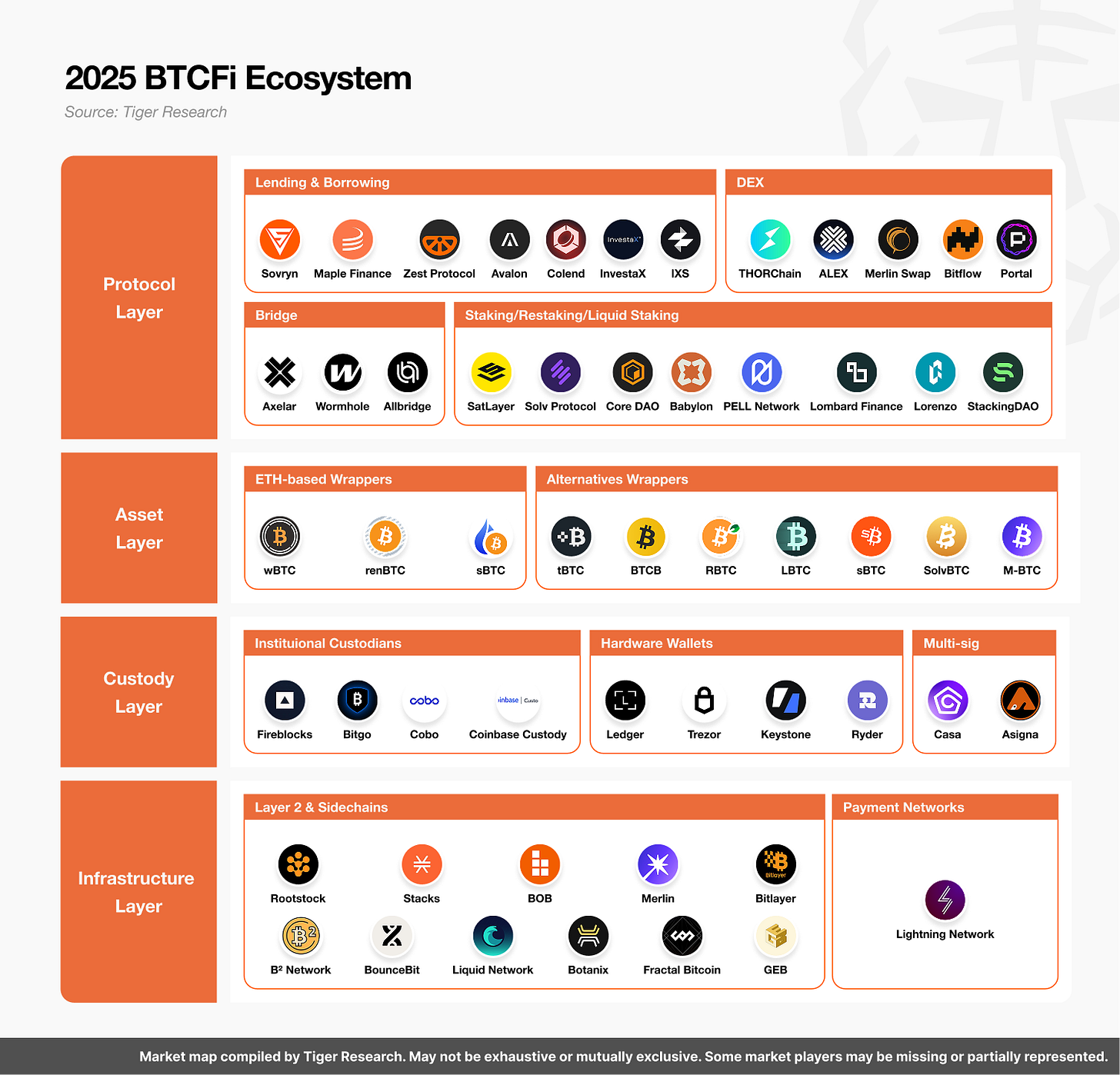This report was written by Tiger Research, analyzing the BTCFi thesis and examining why DeFi on Bitcoin is becoming an inevitable trend through capital efficiency improvements, institutional adoption drivers, and technical infrastructure developments.
TL;DR
Bitcoin’s capital base is vast but underutilized — BTCFi changes that: With over 14 million BTC sitting idle, Bitcoin lacks the capital efficiency that defines Ethereum’s DeFi landscape. BTCFi unlocks this dormant liquidity by turning BTC into a yield-bearing asset, enabling lending, staking, insurance, and other decentralized financial use cases built on Bitcoin’s security.
Institutions are driving demand for BTC-native yield, and the infrastructure is ready: From regulated custody solutions to real-world yield protocols, the BTCFi stack now includes ETFs, permissioned lending, insurance models, and staking protocols that meet institutional standards.
Technical breakthroughs and Layer-2 innovation make BTCFi scalable and programmable.
Upgrades like Taproot and emerging Layer-2 platforms now enable smart contracts, token issuance, and composable DeFi on Bitcoin.
1. The Capital Bottleneck: Why BTCFi Exists
Bitcoin today represents over a $1 trillion asset base that largely sits idle. Analysts estimate that 99% of BTC’s market cap is “idle” – in other words, nearly all bitcoins are held in wallets or cold storage, earning no on-chain yield. On-chain data also confirms this: more than 14 million BTC have remained unspent in long-term storage.
This stands in stark contrast to Ethereum, where a huge portion of ETH is actively deployed in DeFi and staking. For example, liquid staking protocols on Ethereum have locked over 14.37 million ETH (~$56 billion), turning ETH into a yield-bearing asset and driving a vibrant on-chain economy.
Ethereum’s DeFi “summer” demonstrated how capital efficiency, via staking rewards, lending interest, liquidity provision, etc., can unlock tremendous value on a smart contract platform. Bitcoin, by comparison, has been underutilized in this regard; its treasure trove of liquidity primarily earns 0% and cannot be composed into further financial products on the base layer.
BTCFi or Bitcoin DeFi is about unlocking that dormant capital. As CoinGecko’s primer puts it, Bitcoin DeFi “transforms bitcoin from a passive asset into a productive one,” enabling holders to earn returns on their BTC or use it in DeFi applications while leveraging Bitcoin’s renowned security.
In essence, BTCFi aims to do for Bitcoin what DeFi did for Ethereum: turn a static asset into a source of yield and a building block for further innovation.
2. Institutions Are Coming for Yield
Institutional demand may be the single most powerful accelerant for BTCFi’s growth, and that shift is already well underway. In late 2023 and 2024, a wave of major asset managers filed for and obtained approval for spot Bitcoin ETFs, finally bringing BTC into mainstream investment portfolios.
This development highlights a deeper trend. Institutions already view Bitcoin as a strategic reserve asset. But they're also yield-sensitive. In traditional finance, capital is never left idle — bonds pay interest, stocks pay dividends, and even cash sits in money market funds. Bitcoin, until recently, earned nothing.
BTCFi is changing that. Institutions are now asking the next logical question: What can we do with our BTC holdings? And increasingly, they're seeking ways to lend, stake, or use Bitcoin as collateral, unlocking yield in a way that mirrors familiar TradFi models.
As these options become available, institutional interest in BTCfi is surging. A 3–5% annual return on BTC may sound modest, but when managing billions, that incremental yield is incredibly valuable.
With the broader BTCfi movement maturing, BTC holders can now access even higher yields of 10–20% annualized through decentralized protocols, making the opportunity increasingly compelling. If BTC can offer steady returns with minimal risk — while retaining price upside — it becomes not just a reserve asset, but the monetary anchor of DeFi.
As more institutions and individuals adopt BTC as a long-term reserve asset—a trend reinforced by Bitcoin's demonstrably superior returns compared to the vast majority of altcoin holdings in recent cycles—the incentive to earn yield on idle holdings becomes increasingly clear, with yield generation evolving from a niche strategy into a foundational component of asset management.
Just as U.S. Treasuries underpin traditional capital markets, Bitcoin could serve as the base layer of yield in crypto finance, setting the benchmark for everything from lending rates to DeFi protocol valuations.
3. Infrastructure Is Ready to Meet Institutional Demand
The BTCFi ecosystem is moving quickly to meet this moment, with new products and frameworks purpose-built for institutional adoption:
3.1. Regulated Custody & Liquid Wrappers
Firms like Fidelity Digital Assets, Coinbase Custody, and BitGo now support DeFi participation under strict custodial compliance. Emerging solutions such as Liquid Custody Tokens (LCTs) — for example, BBTC from BounceBit — enable institutions to hold BTC under qualified custody while deploying it on-chain to earn yield. Institutions retain regulatory comfort while gaining access to DeFi’s upside.
3.2. ETFs & Yield-Integrated Products
In Europe, yield-bearing Bitcoin ETPs are already live. Valour’s BTCD ETP stakes BTC into a Bitcoin Layer-2 and was paying around 5.6% APR as of late 2024. Meanwhile, institutions are beginning to explore BTC-linked structured notes, dual-yield products, and basis trade strategies — merging TradFi instruments with crypto-native yield engines.
BounceBit Prime, for instance, combines tokenized U.S. Treasury bills with BTC yield strategies in a single product, offering a dual return that traditional allocators like family offices and hedge funds are used to. This is Bitcoin yield, structured for Wall Street.
Another example is SatLayer, which introduces a decentralized insurance vehicle backed by yield-generating BTC. Often described as a “Bitcoin Berkshire Hathaway,” SatLayer allows any BTC holder to restake their assets into an on-chain insurance pool and earn a share of premium revenue. SatLayer is partnering with both crypto-native and traditional underwriters, including Nexus Mutual and Relm, to build a new class of decentralized, BTC-backed insurance offerings.
3.3. Protocol maturity & institutional trust
BTCFi protocols like Babylon and Lombard have already surpassed billions in TVL, passed security audits, and are progressing toward SOC2 compliance. Many now include Wall Street veterans on advisory boards and prioritize risk management by design. These are the moves that build credibility with the world’s largest capital allocators.
All of these points toward a future where BTC yield becomes a cornerstone of institutional portfolios, just like U.S. Treasuries in traditional markets. And this shift has ripple effects: institutional inflows into BTCFi don’t just benefit Bitcoin holders. They strengthen liquidity across chains, encourage more DeFi standards, and anchor the entire crypto economy with a base layer of trusted, productive capital.
In short, BTCFi offers institutions the best of both worlds: Bitcoin’s credibility as a pristine asset, paired with the opportunity to earn yield.
4. Why Now? The Tech Stack Powering BTCFi's Breakout
BTCfi isn’t just a theoretical concept anymore — it’s becoming a practical reality, thanks to breakthroughs across three fronts: technical upgrades to the Bitcoin ecosystem, rising market demand backed by stronger infrastructure, and growing institutional interest supported by regulatory clarity.
4.1. From Taproot to BitVM
Recent upgrades to the Bitcoin protocol and ecosystem have opened the door for more complex financial applications. The 2021 Taproot upgrade, for example, improved Bitcoin’s privacy, scalability, and programmability, even “encouraging the use of smart contracts on Bitcoin” by enhancing their efficiency. Taproot also enabled new protocols such as Taro (now Taproot Assets) for issuing tokens and stablecoins on Bitcoin’s ledger.
Likewise, concepts like BitVM – a proposed Bitcoin “virtual machine” – promise to allow Ethereum-style smart contracts on Bitcoin, with a testnet targeted in 2025. Just as importantly, a wave of Bitcoin-native layer-2 networks and sidechains has arrived.
Platforms such as Stacks, Rootstock (RSK), Merlin Chain, and the new BOB rollup are bringing smart contracts to Bitcoin’s orbit.
For instance, Stacks secured by Bitcoin hash power enables smart contracts, cross‑chain tokenization via sBTC, and native BTC yield through Proof‑of‑Transfer (PoX) stacking - making Bitcoin programmable and productive for builders and institutions alike.
Or BOB (Build on Bitcoin), which is an EVM-compatible L2 that uses Bitcoin as its anchor for finality. It even plans to leverage BitVM to achieve Turing-complete contracts anchored to Bitcoin’s security.
Meanwhile, the Babylon protocol has introduced Bitcoin staking to secure other chains and has already attracted tens of thousands of BTC. By late 2024, Babylon had over 57,000 BTC (~$6 billion) staked in its system, placing it among the top DeFi protocols by TVL. Or, Merlin, now the largest Bitcoin L2 by peak TVL, which reached about $3.9 billion in just 50 days post-launch, is also massively expanding the BTCFi landscape.
This combination of upgrades and new layers has resolved many earlier hurdles – Bitcoin can now support tokens, smart contracts, and cross-chain movements in a modular way.
4.2. From Ordinals to BRC-20
The past two years have shown a clear demand for more expressive uses of Bitcoin. A prime example was 2023’s explosion of Ordinals and BRC-20 tokens. Users began inscribing assets and NFTs on sats, driving up on-chain activity.
By the end of 2023, over 52.8 million Ordinal inscriptions had been created, surging to ~69.7 million by late 2024. Alongside this came hundreds of millions of dollars in fees paid to miners, over 6,900 BTC in fees by Q3 2024, equating to ~$405M.
This craze proved that users are willing to utilize Bitcoin block space for more than simple HODLing or payments – there is an appetite for Bitcoin-based NFTs, tokens, and by extension, DeFi applications.
The emergence of the Ordinals protocol has fundamentally enabled Bitcoin to host these new asset types, while the BRC-20 standard has provided a framework for tokenization that, though technically different from Ethereum's ERC-20, serves a similar purpose in expanding Bitcoin's utility.
All these advancements form an infrastructure stack that simply did not exist a few years ago. Bitcoin's ecosystem is now ready to support a full DeFi stack around the core asset.
In summary, all these catalysts have coalesced right now, making the BTCFi thesis timely. Bitcoin DeFi is no longer hypothetical; the pieces are in place, and early versions are live. The coming years will likely see an acceleration of this trend.
5. BTCfi Ecosystem Scenario
BTCFi aims to transform Bitcoin from a passive store of value into an actively deployed financial asset within decentralized finance.
5.1. Onboarding Bitcoin into DeFi
The BTCFi lifecycle typically begins when a BTC holder transfers their assets to a bridge or custodian—centralized, federated, or decentralized. The original BTC is locked, and a 1:1 tokenized version is issued. This wrapped BTC enters the ecosystem at the asset layer, enabling integration with smart contracts and DeFi protocols.
5.2. Navigating the BTCFi Stack
Once tokenized, BTC moves through the BTCFi stack via structured layers. At the asset level, Solv Protocol enables BTC to function as cross-chain, yield-bearing collateral via SolvBTC and the Staking Abstraction Layer (SAL), facilitating structured products and capital-efficient use cases.
Institutional adoption is supported by products like lstBTC, offered by Maple Finance in partnership with CoreDAO, which leverages Core’s Dual Staking mechanism. Bitlayer enables a trust-minimized, Bitcoin-native Layer 2 environment, where Peg-BTC can support smart contract activity.
On the regulated side, IXS offers BTC-based real-world yield through compliant financial structures. In parallel, infrastructure-oriented projects such as Botanix are extending Bitcoin’s programmability by introducing EVM compatibility and enabling smart contracts with BTC as gas.
5.3. Leveraging BTC for Collateral and Staking
With foundational infrastructure in place, BTC can be used as collateral—for example, on bitSmiley—to mint stablecoins, enabling yield generation or stablecoin-based strategies. Emerging staking models are also expanding BTC utility: protocols like Babylon allow native BTC to participate in securing proof-of-stake networks, earning rewards for doing so.
5.4. Managing Risk and Exiting Positions
Throughout this process, BTC holders retain economic exposure to Bitcoin’s price movements while gaining access to yield from DeFi protocols. These positions are reversible: users can exit at any time by unwinding positions, redeeming wrapped BTC, and reclaiming the original Bitcoin on Layer 1, net of any fees or earnings.
5.5. Protocol Incentives and Revenue Models
Underlying these flows are diverse monetization models. Lending platforms earn from origination and utilization fees, capturing spreads between borrowers and lenders. DEXs charge liquidity fees per trade, typically shared with liquidity providers and protocol treasuries. Staking and bridging services take commissions on rewards earned, aligning incentives to maintain uptime and network security.
Some protocols use native tokens to subsidize usage, bootstrap activity, or govern treasuries. Custodial products often adopt traditional asset management models, charging an annual fee (e.g., 0.4–0.5%) on assets under custody or management.
Additionally, spread capture provides a less visible but meaningful revenue stream: protocols can profit from cross-chain arbitrage or structured yield strategies exploiting rate differentials and basis trades.
Together, these models illustrate how BTCFi protocols activate idle Bitcoin while building sustainable revenue foundations. As more BTC enters this layered system, it not only circulates but compounds—generating yield and supporting a parallel economy centered around Bitcoin.
🐯 More from Tiger Research
Read more reports related to this research.Borrowing Against Bitcoin? How Coinbase and Vield Are Making It Mainstream
Bitcoin for Real Estate? A Major Japanese Company is Betting on It
Disclaimer
This report has been prepared based on materials believed to be reliable. However, we do not expressly or impliedly warrant the accuracy, completeness, and suitability of the information. We disclaim any liability for any losses arising from the use of this report or its contents. The conclusions and recommendations in this report are based on information available at the time of preparation and are subject to change without notice. All projects, estimates, forecasts, objectives, opinions, and views expressed in this report are subject to change without notice and may differ from or be contrary to the opinions of others or other organizations.
This document is for informational purposes only and should not be considered legal, business, investment, or tax advice. Any references to securities or digital assets are for illustrative purposes only and do not constitute an investment recommendation or an offer to provide investment advisory services. This material is not directed at investors or potential investors.
Terms of Usage
Tiger Research allows the fair use of its reports. ‘Fair use’ is a principle that broadly permits the use of specific content for public interest purposes, as long as it doesn't harm the commercial value of the material. If the use aligns with the purpose of fair use, the reports can be utilized without prior permission. However, when citing Tiger Research's reports, it is mandatory to 1) clearly state 'Tiger Research' as the source, 2) include the Tiger Research logo. If the material is to be restructured and published, separate negotiations are required. Unauthorized use of the reports may result in legal action.

